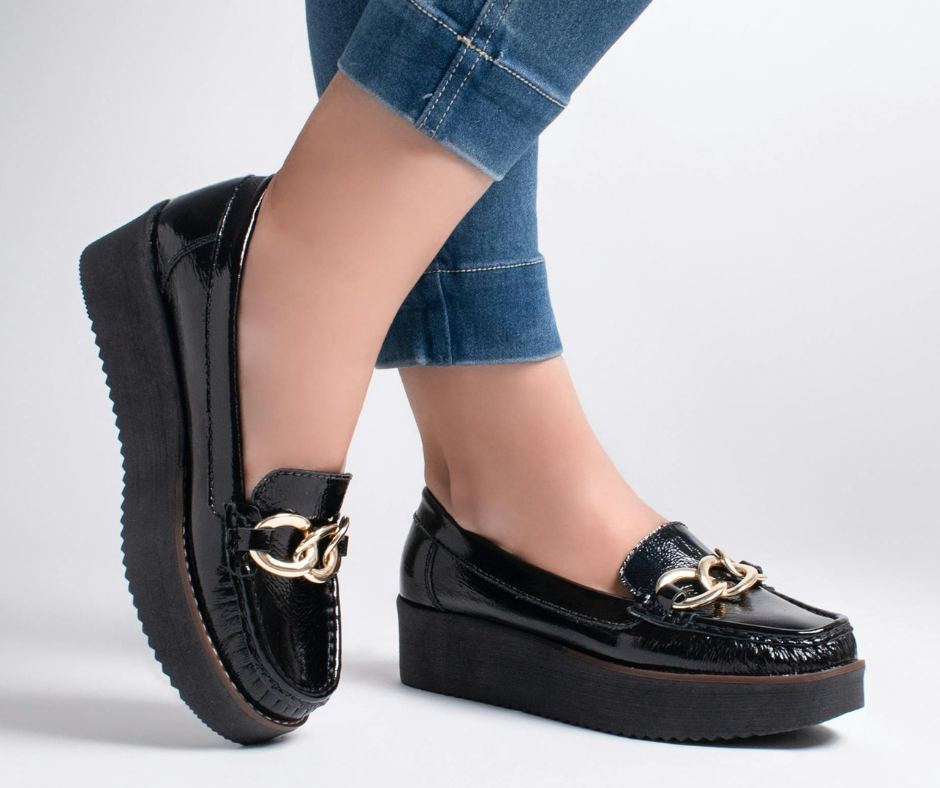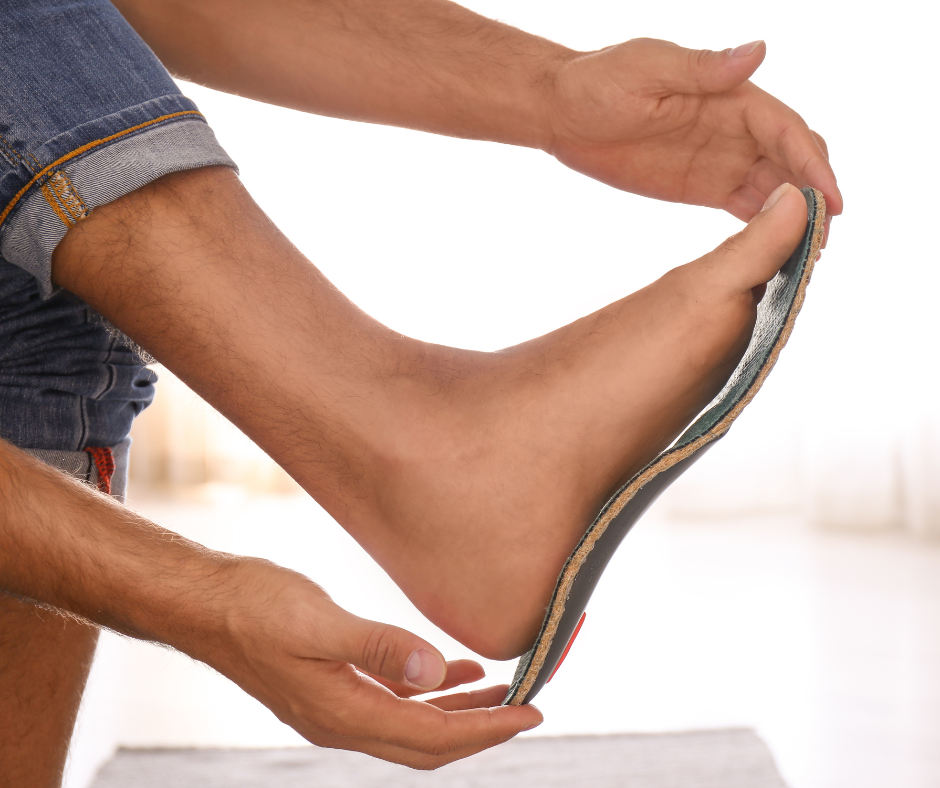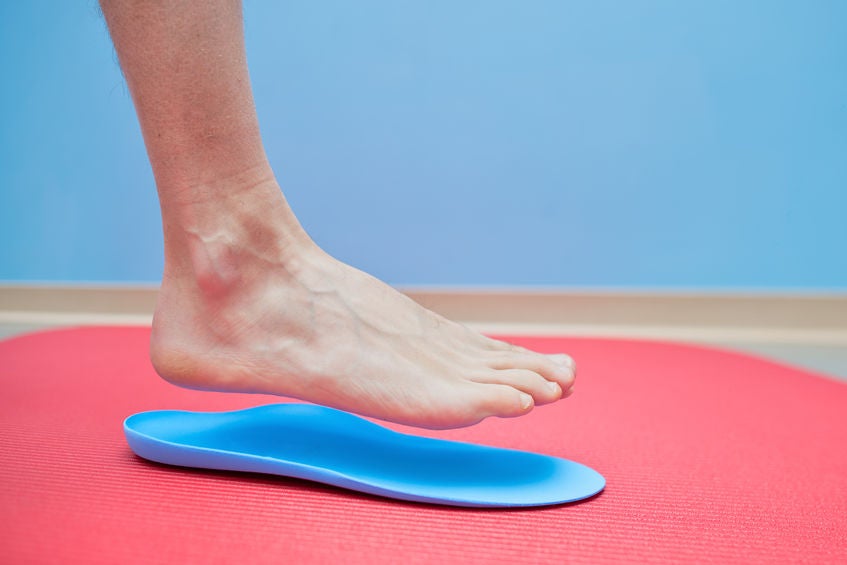-
Love the Loafer Trend? Sidestep the Pain With a Podiatrist’s Help!

Walk down any city street this fall, and you’ll see them everywhere: sleek, stylish, and sophisticated loafers. They are the go-to shoe for the modern professional, a perfect blend of casual comfort and office-appropriate style. But this fashion trend has a dark side that many are discovering the hard way: persistent, nagging foot pain.
If you’ve found yourself with aching arches or a sore heel after a day in your favorite flats, you’re not alone. The very features that make many loafers look so chic are often the same ones that are terrible for your feet. In this blog, Kentlands Foot & Ankle Center will explain why your stylish shoes might be the source of your pain…and how you can choose a pair that offers fashion and function.
“Why Do My ‘Comfortable’ Flats Hurt Me So Much?”
The irony of many popular loafers and ballet flats is that they are marketed as a comfortable alternative to heels, but they often lack the fundamental features your feet need for support. This is mostly due to:
- Zero Arch Support: The most common design flaw is a completely flat interior.
- Without a supportive arch, the full force of your body weight collapses onto your plantar fascia, the ligament that runs along the bottom of your foot.
- This constant strain is a primary cause of plantar fasciitis.
- No Shock Absorption: A thin, flimsy sole provides zero cushioning against hard surfaces like concrete sidewalks and office floors.
- Every step sends a jarring impact through your heel and up your kinetic chain, leading to heel pain and general foot fatigue.
- Narrow Toe Boxes: Many fashion-forward loafers have a tapered or pointed toe box that squeezes your toes into an unnatural position.
- This can aggravate existing bunions and hammertoes or even contribute to their formation over time.
The Podiatrist’s Checklist for a Better Loafer
You don’t have to give up the style you love. You just need to become a smarter shopper. The next time you’re looking for a new pair of flats, use this simple checklist!
[✔] The Bend Test: A good shoe should only bend where your foot naturally bends—at the ball of the foot. If you can fold the shoe in half in the middle of the arch, it has no structural support.
[✔] The Squeeze Test: The back of the shoe that cups your heel (the heel counter) should be firm and stable. A flimsy heel counter provides no support and can contribute to instability.
[✔] Look for a Removable Insole: This is a game-changer. A shoe with a removable insole allows you to add your own custom orthotic.
[✔] Check for a Subtle Heel: Even a slight, quarter-inch heel is better than a completely flat sole. This small amount of elevation can help to reduce strain on your Achilles tendon and plantar fascia.
The Power of Custom Orthotics
If you’re already dealing with chronic pain or if your foot structure requires more significant support, consider a custom orthotic.
Unlike an over-the-counter insert, a custom orthotic is a prescription medical device created from a 3D scan of your feet. Modern orthotics can be designed with a slim profile to fit discreetly inside many styles of dress shoes and loafers!
Still have questions? Get in touch for a comprehensive foot examination with Kentlands Foot & Ankle Center podiatrist Dr. Jon M. Sherman. To make your appointment, please call our office at 301-825-9697. You can also contact us online.
- Zero Arch Support: The most common design flaw is a completely flat interior.
-
Custom Orthotics, Biomechanics, and You: Step into Better Health with 3D Scanning

Our feet are the foundation of our bodies, and proper biomechanics – the way our muscles, bones, and joints work together – are essential for pain-free movement and overall well-being.
Custom orthotics can play a vital role in optimizing your biomechanics, and advancements in 3D scanning technology are revolutionizing the way these supportive devices are created. In this post, Kentlands Foot & Ankle Center explains how new tech is providing orthotics that are better than ever for all kinds of issues, so read on to learn more!
Understanding Biomechanics
When your feet don’t function optimally, it can throw off your entire body’s alignment. This can lead to a variety of issues, including:
- Foot Pain: Plantar fasciitis, heel spurs, bunions, and metatarsalgia.
- Knee Pain: Misalignment leading to patellofemoral pain syndrome or IT band syndrome.
- Hip and Back Pain: Caused by altered gait and posture.
- Balance Problems: Increased risk of falls, especially in older adults.
- Sports Injuries: Stress fractures, shin splints, and Achilles tendonitis.
Custom Orthotics: Tailored Support for Your Unique Needs
Unlike over-the-counter inserts, custom orthotics are specifically designed to address your individual foot structure and biomechanical imbalances. They provide targeted support and cushioning, helping to:
- Improve Weight Distribution: Evenly distribute pressure across your feet, reducing stress on specific areas.
- Enhance Balance and Stability: Provide a stable base of support, improving balance and reducing the risk of falls.
- Correct Gait Abnormalities: Guide your feet into a more natural and efficient gait pattern.
- Prevent and Aid Recovery from Sports Injuries: Offer shock absorption and support to reduce strain on joints and soft tissues.
The 3D Advantage: Precision and Personalization
Traditional methods of creating orthotics, like plaster casting, can be messy and imprecise. 3D scanners, on the other hand, can capture a highly accurate digital model of your feet in seconds, providing a detailed blueprint for crafting truly customized orthotics.
- Superior Accuracy: 3D scans capture the intricate contours of your feet with unparalleled precision.
- Dynamic Assessment: Some advanced scanners can even analyze your gait while you walk or run, providing a dynamic assessment of your foot function.
- Faster Turnaround: Digital models can be instantly sent to the lab, speeding up the fabrication process.
The result? A pair of custom orthotics that fit your feet like a glove, providing optimal support and comfort in one.
Interested in learning more? We’re always happy to help! Schedule a comprehensive foot examination with Kentlands Foot & Ankle Center podiatrist Dr. Jon M. Sherman. To make your appointment, please call our office at 301-825-9697.
-
Benefits of Custom Orthotics

We have all heard the saying “one size fits all.” Unfortunately, when it comes to footwear, this does not apply. Sometimes you might notice that one foot feels slightly different from the other. It is due to each person having their own unique feet! At Kentland’s Foot and Ankle Center, patients are examined and treated based on their own unique feet. Our podiatry team recommends using foot orthotics if foot muscles, ligaments, bones, or tendons are not aligned well or the patient is experiencing discomfort. Orthotics are known to redistribute the pressure that your feet endure each day.
Custom Orthotics VS Over-the-counter Orthotics
Over-the-counter foot orthotics are usually found at drugstores. The use of orthotics, in general, can be very helpful in eliminating foot discomfort quickly. For chronic foot pain, we always advise our patients to get fitted for custom foot orthotics. Precise measurements of your foot are documented and sent to a lab where they will make your orthotics. It ensures that you receive all the support your feet need.
Benefits of Custom Orthotics
Custom orthotics are known to:
- Provide superior comfort allowing you to stand, walk and run comfortably
- Fight off pain in the lower extremities
- Improve balance by allowing your feet the support to maintain a functional position
- Enhance athletic performance
- Lower the risk of injury
Custom orthotics help your feet feel better, but did you know they also help your overall body? Custom orthotics are also known to:
- Reduce ankle and leg pain
- Maintain balance
- Stand or walk for extended periods of pain-free
- Reduce lower back pain
- Lower the risk of calluses, corns, and bunions
- Improve posture
Final Thoughts
If you are experiencing chronic foot pain or discomfort in your lower extremities, call our Montgomery office at 301-330-5666 and schedule an appointment with our board-certified podiatrist Dr. Jon M. Sherman or visit our website for more information.
RECENT POSTS
categories
- Uncategorized
- Featured Articles
- Foot Disorders
- Broken Ankle
- Broken Toe
- Fracture
- Foot Health
- Foot Care
- Arthritis
- Foot Pain
- Skin Cancer
- Podiatry Appointment
- Custom Orthotics
- Podiatrist
- Diabetes
- Gout
- Heart Health
- National Nutrition Month
- National Foot Health Awareness Month
- Foot Safety
- Foot and Ankle Injuries
- Falls Prevention
- Chronic Heel Pain
- Shoes
- Laser Therapy
- Quoted
- Physical Therapy
- KeryFlex
- Sweat
- Summer Foot Care
- Sports Injury
- ESWT
- Fungal Toenails
- Bunion
- Plantar Fasciitis
- PinPointe Laser
- Heel Pain


